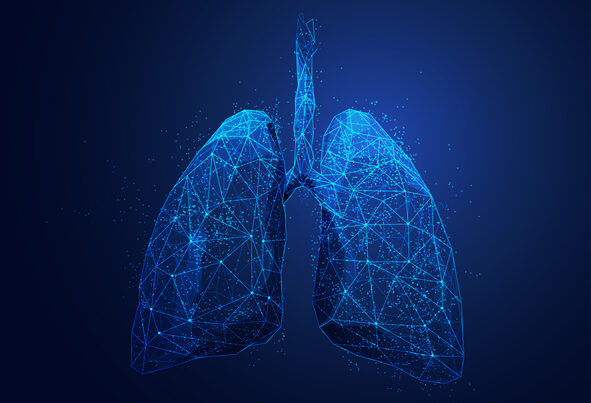In April, Butterfly Network received FDA clearance for its AI tool designed to help providers assess abnormal lung conditions more easily. Now, the Massachusetts-based medical device company is launching the product commercially.
The tool, called the Auto B-line Counter, can provide medical practitioners with an accurate B-line count from just a six-second lung ultrasound clip. The term B-line refers to a specific sonographic artifact that is observed during lung imaging — B-lines are vertical, bright lines that indicate pulmonary congestion or volume overload. They help doctors identify and assess patient’s lung issues without using radiation.

With the Rise of AI, What IP Disputes in Healthcare Are Likely to Emerge?
Munck Wilson Mandala Partner Greg Howison shared his perspective on some of the legal ramifications around AI, IP, connected devices and the data they generate, in response to emailed questions.
“B-lines are a problem indicative of many conditions, but one of the most common is congestive heart failure. Studies have also shown that treating patients based on B-line counts can reduce emergency room visits and hospitalization, and when used prior to discharge can even predict cases that are a readmission risk,” said John Martin, Butterfly’s chief medical officer, in a recent interview.
With its new product launch, Butterfly joins a few other companies on the market that offer AI-powered B-line quantification tools, such as Phillips and GE HealthCare. Without auto-counters, B-lines have to be counted manually — that makes for a tedious and time-consuming process, Martin pointed out.
Butterfly’s B-line counter seeks to solve this problem by using AI to automatically count the number of B-lines in a rib space. The tool can also count B-lines that are typically difficult for clinicians to recognize with the naked eye, Martin added.
To develop and train the tool’s algorithm, Butterfly used its internal database, which houses millions of de-identified ultrasound cines videos. The data points in that repository come from ultrasounds conducted at hundreds of sites across all 50 states, Martin explained. He added that these ultrasounds involved patients across a diverse range of ages, genders, races, ethnicities and body mass indexes.
“By reliably automating the process, we believe [the tool] will not only increase the consistency of the measurements, but also the frequency of providers’ using this valuable tool to manage patients more efficiently. A quick lung ultrasound at the bedside with Auto B-Line Counter is much faster than waiting for a chest X-ray, and definitely more accurate,” he declared.
The emergency department is a key setting that could benefit from Butterfly’s B-line counter, Martin said. He pointed out that difficult or labored breathing is one of the leading reasons for emergency room visits — rather than sending a patient with shortness of breath away to get chest X-ray, emergency physicians can use Butterfly’s lung ultrasound tool right at the bedside to get an automatic B-line count. This could help clinicians determine sooner if a condition like congestive heart failure or COPD is at play.
In Martin’s view, primary care physicians could be big adopters of the tool as well. They can use it to easily and quickly perform a lung scan to check for wetness in the lungs as part of regular physical exams, he explained.
“Being able to see — not just hear — the lungs allows them to make more informed care decisions earlier and more often, whether in standard preventative care visits or upon complaints of labored breathing. Bypassing the need for a chest X-ray, this tool can help save the patient, provider and hospitals time and money, as well as shorten the path to starting appropriate treatment,” Martin declared.
While this tool may benefit primary care providers, adoption might be hard given the limited duration of an annual physical.
While time could be a deterrent in some cases, reimbursement won’t be. Since Butterfly’s B-line counter acts as an adjunct for the interpreting physician, it will be included in the current CPT code for professional services, he added.
At a high level, the goal of Butterfly’s new product is the same as the company’s other AI tools, Martin said. That goal is to help healthcare professionals practice more efficiently and consistently by assisting them with the key functions of image acquisition and interpretation.
“If we can continually do this, we will boost confidence in using ultrasound at the bedside for key clinical applications and drive more widespread utilization of this incredibly powerful tool. The data is clear on the value of point-of-care ultrasound, now we have to help practitioners incorporate this into daily care delivery pathways,” Martin explained.
Photo credit: Jackie Niam, Getty Images















